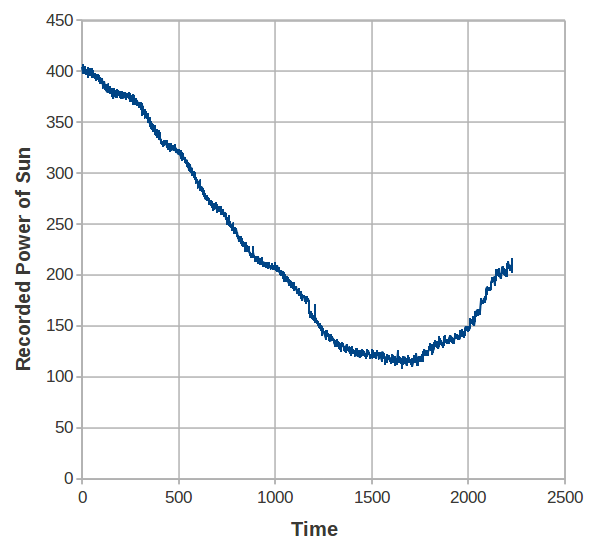A pretty good swath of the U.S. was exposed to an annular (as opposed to total) solar eclipse yesterday afternoon, and an even wider swath experienced a pretty significant partial solar eclipse. But experienced is a relative term. What if the weather doesn’t cooperate?
Certain parts of the great northwest are famously known for their cloudy days. Unfortunately, I live in one of those places, and the weather was especially uncooperative. In fact, if I didn’t know what the direction the sun was supposed to be, I couldn’t have picked it out by looking at the overcast sky. Though I think I perceived it getting darker, but if I hadn’t known there was an eclipse, I probably would have chalked it up to dark clouds.
So how to best experience the eclipse? Clouds may be translucent to visible light, but they are transparent to radio waves. I’m lucky enough to have access to a radio telescope with a group of like-minded astronomy aficionados, and by pointing it at the sun, observing at 1420 MHz, we were able to observe the effect of the eclipse despite the dour weather. Both the duration, and the degree of obfuscation matched predicted characteristics of the optical eclipse.
I’m sorry I don’t have the time/talents to get the units on the graph better, but you can trust me that the minimum of the power graph corresponded to the reported time of maximum eclipse. In our area, we expected ~75% blockage, so the magnitude of changes in power we observed correlated pretty satisfyingly. Our data, of course, does not consist of an image of the eclipse; instead, it is a single, time dependent value of power is recorded of an area of the sky that includes the sun.
Why can’t we get better than one-pixel resolution? A lot of it has to do with the frequency of radio waves. They have wavelengths on the order of meters (visible light is on the order of a micrometer). Without expounding too much on principles of electromagnetic radiation, know that it is much easier to achieve higher resolution with a smaller aperture at smaller wavelengths.
The Earth’s atmosphere (and magnetic field) is fairly complex, and blocks a lot of types of radiation from space (which is good for our health, but bad for astronomy). This is why certain types of telescopes have to go into space, because the wavelengths they’re meant to observe do not are not observable from the ground. But while the atmosphere is more opaque to many more frequencies than we realize, it is interesting to note that it is more transparent to some waves (e.g. radio) than you might not otherwise suspect.


